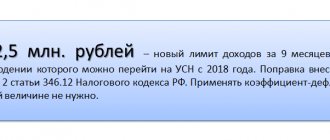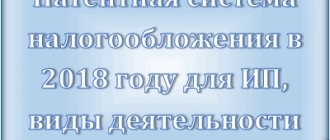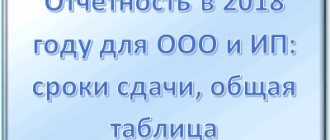The basis of entrepreneurship is the regular increase in the effectiveness of economic activities. Operational efficiency can be increased by optimizing the reporting process and reducing production costs. You can reduce business costs using special tax regimes. Only those entrepreneurs whose business meets the criteria established by regulatory authorities can take advantage of preferential taxation systems. This policy of the tax authorities is explained by the fact that preferential regimes cannot be applied in all areas of business. If it is impossible to switch to a special system, the entrepreneur is obliged to use the standard tax payment scheme. In this article we propose to consider the question of what the general taxation system is.
Decoding OSNO defines the concept of a general taxation system
BASIC: what is it
The term "OSNO" is an abbreviation and stands for general taxation system. According to experts, this tax regime is one of the most complex types of financial responsibility. This system includes a large number of different taxes and “forces” the entrepreneur to generate the most complete reports. These requirements apply not only to declarations, but also to financial statements. Companies operating under this scheme are required to pay more than four different types of taxes. In addition, it is necessary to take into account mandatory contributions to the state treasury for each company employee.
Business entities using this regime cannot use the various benefits available to payers who use special systems.
As a rule, this type of taxation is used by large companies. It is important to note that most businessmen can switch to using other tax payment regimes. To do this, you must send a written notification to the control authorities and obtain approval from the tax service. You can switch to other modes only if the company meets the parameters set by a special system. If a refusal is received, the entrepreneur will have to continue to use the general scheme or reorganize his company.
Main features of taxation
Business entities using the main tax payment scheme are required to comply with a special procedure for recording financial documents. This scheme includes several different taxes. It is important to note that the procedure for using OSNO for legal entities is somewhat different from the use of this system by private entrepreneurs. This factor must be taken into account by newcomers to the business world who are at the stage of choosing an organizational form for their project.
A unique feature of the system under consideration is the prohibition on the simultaneous use of OSNO with other taxation systems . The only exception is the simultaneous use of OSNO with the patent system or “imputation”. This rule is established by law. Entrepreneurs who want to use this system must carefully weigh all the pros and cons, having first studied all the mandatory payments included in this regime.
OSNO is a special tax calculation scheme for business entities
Advantages and disadvantages
Advantages and disadvantages of using OSNO
The advantages of doing business on the general taxation system are:
- the possibility of making a profit without restrictions;
- no need to pay tax in case of negative income;
- the ability to involve an unlimited number of employees in achieving goals related to the results of business activities.
The negative aspects of working using the general mode include:
- the need for accounting;
- storage of documentation for 4 years.
When is it profitable to switch to OSNO?
Based on the above, we can conclude that using the main taxation system is extremely unprofitable for most entrepreneurs. However, this opinion is erroneous. The use of this system is advisable in cases where an entrepreneur plans to cooperate with companies using this mode. The choice of such counterparties allows you to reduce the amount of mandatory contributions to the budget by the total amount of VAT received from the counterparty. In addition, companies using this system have the opportunity to enter into contracts with foreign companies. In this case, the company has the opportunity to reduce the amount of regular payments by deducting VAT, which is included in the final cost of imported and exported goods.
It is also advisable to use this mode if the selected area of primary activity belongs to the group of preferential areas. This category includes medicine, educational activities, the production of agricultural goods and social taxes. The benefits provided to companies operating in this area can significantly reduce tax costs.
In what situations is the use of OSNO justified?
The OSNO tax system is beneficial in situations where:
- Most of the business entity's counterparties operate under an identical tax scheme. This is due to the possibility of reducing the value added tax by its value included in the cost of goods or services of suppliers or performers.
- Partners cooperating with a company operating on OSNO have the opportunity to deduct input VAT paid by the business entity. This causes an increase in the criterion of competitiveness in the market, since cooperation with the company is considered beneficial due to a reduction in the cost of products.
- Goods are regularly imported, necessitating their import into the customs territory of the Russian Federation, where VAT must be paid, which, if the enterprise is on the general taxation system, can be returned back as a deduction.
Taxes paid under OSNO
The main tax system is one of the most complex regimes, including several different types of taxes. It is important to note that these taxes are paid individually due to the fact that part of them is redirected to the regional treasury, and part to the federal budget. Before you start using this system, you need to familiarize yourself with the main components of this mode. You can obtain this information from tax authority employees or on the official website of this authority.
To the profit of the enterprise
The system under consideration includes several direct taxes. One of them is the tax on profits received by a legal entity. The twenty-fifth article of the Tax Code provides information on the procedure for calculating this tax. The rate for this tax is twenty percent of the company's total profit. To determine the size of the payment, it is necessary to multiply this indicator by the amount of the tax base.
Income tax has two main elements. Most of the amount paid by a legal entity is redirected to the regional budget. The remaining amount is intended for the federal treasury. It is important to note that local governments can provide various benefits to legal entities. You only need to pay this tax once during the year. Payment must be made before the twenty-eighth of March of the year following the reporting year. The current Tax Code obliges business entities to make quarterly advances. Advance payments are transferred until the twenty-eighth day of the month following the end of the quarter. Along with the funds, the entrepreneur must send reports on this tax.
Carrying out business activities in the OSNO mode implies the need to pay all legally required types of taxes, as well as maintaining special records of payment documentation
For the income of individuals
The OSNO tax system, in addition to the corporate profit tax, includes a tax on personal income. This tax is one of the direct payments, since the amount of payments is calculated based on the amount of income. Each company is required to independently calculate the amount of these contributions. Money received from business entities is redirected by the tax service to the federal treasury.
In order to determine the amount of the contribution, the entrepreneur needs to find the difference between the amount of income and the advances already transferred. When making calculations, the benefits provided for the company are taken into account. The result obtained must be multiplied by the rate of this tax. Today, the personal income tax rate is thirteen percent. This rule applies only to residents and citizens of our country.
A private entrepreneur acting in the status of an employer is obliged to transfer to the federal budget not only the income tax of his employees, but also for himself personally. This tax is paid once during the year. When paying, it is recommended to adhere to the following scheme:
- It is necessary to transfer funds to the state budget before the fifteenth of July of the year following the one in which the income was received. The only exception to this rule is the tax authority's requirement to make an advance payment.
- The first advance payment must be made at the end of the second quarter (before the fifteenth of July), the second advance payment is transferred at the end of the third quarter (before the fifteenth of October), and the last amount is paid at the end of the reporting year (before the fifteenth of January).
When paying this tax, an entrepreneur needs to fill out a declaration using the “3-NDFL” form. For business entities paying this tax for the first time, the “4-NDFL” form is provided.
For property
OSNO is one of the most complex tax systems, which includes, in addition to the above mandatory payments, property tax. In this case, the estimated value of assets on the company’s balance sheet is used as the tax base. The funds transferred by the entrepreneur are redirected by the tax authority to the local budget. It is important to note that private entrepreneurs do not need to independently prepare tax base calculations, since control authorities regularly send relevant notifications to companies.
Only legal entities need to do their own calculations. In order to determine the amount of the contribution, it is necessary to multiply the value of the assets by the rate established by the Federal Tax Service. The total amount of previously transferred funds should be subtracted from the result obtained. The property tax rate for individual entrepreneurs varies from one tenth to two percent of the cadastral value of real estate. For organizations, the rate is set at 2.2%.
OSNO is a tax regime for which there is no separate chapter in the Tax Code of the Russian Federation
Added value
In addition to direct tax payments, business entities using OSNO are required to pay indirect taxes. Value added tax falls into this category. Its value depends on the final cost of the commodity product, service provided or services rendered. Money received from entrepreneurs is redirected by the Federal Tax Service to the federal treasury. The amount of these payments depends on the total amount of revenue received through the sale of commercial products or the provision of services. The amount of input VAT must be subtracted from this value. This amount is determined on the basis of the counterparties' accounting reports. The amount of value added tax for restoration can be determined using Article One Hundred and Seventieth of the Tax Code of the Russian Federation. This document provides detailed procedures for making calculations.
Tax base: income from sales (revenue) and non-operating income
Income can be received by an organization as:
- income from sales (revenue);
- non-operating income.
According to the rules of Ch. 25 of the Tax Code of the Russian Federation, income is determined not only under OSNO, but also under some special regimes (Articles 346.5, 346.15 of the Tax Code of the Russian Federation).
Revenue is interpreted in Art. 249 of the Tax Code of the Russian Federation as the totality of all receipts in the form of payment for goods sold.
Based on paragraph 1 of Art. 251 of the Tax Code of the Russian Federation, do not apply to income:
- Prepayment. In this case, prepayment includes, for example, the sale of gift cards / certificates (see the definition of the IC of the Armed Forces of the Russian Federation dated December 25, 2014 No. 305-KG-1498).
- Deposit, deposit.
- Contribution (contribution to the authorized capital), payment of the cost of the contribution and some other types of property provision.
All other property benefits (in the form of money, property or estimated income) are non-operating income (Article 250 of the Tax Code of the Russian Federation). These include:
- rent;
- gratuitous receipts;
- positive exchange rate difference (change in the value of foreign currency values due to changes in the exchange rate);
- penalties of various types;
- debt that has expired or has been forgiven by the creditor;
- benefit in the form of saved interest on loans, etc.
Important! If a settlement agreement was concluded, the amount of claims for which the creditor abandoned the claim is not included in taxable profit if the debtor did not recognize the debt (Resolution of the Presidium of the Supreme Arbitration Court of the Russian Federation dated October 22, 2013 No. 3710/13).
Reporting of LLCs operating under OSNO
We have already noted above that the procedure for using OSNO by legal entities is somewhat different from the use of this system by private entrepreneurs. The main difference is the reporting methods. According to established rules, all legal entities are required to regularly submit VAT declarations to employees of the fiscal service. In addition to this report, organizations must regularly fill out a declaration indicating the amount of profit received during the reporting period. These reports must be submitted by March twenty-eighth of the year following the reporting year. When using an advance system, the company must submit reports at the end of each quarter. Funds must be transferred at the time of reporting.
Along with the above tax reports, organizations need to pay property taxes. As mentioned earlier, legal entities independently make all the necessary calculations. It is important to note that local governments have the right to independently establish rules for submitting reports. This means that in some regions of our country, not annual reporting is provided, but a quarterly accounting scheme.
Moment of recognition of income and expenses
Under OSNO, tax calculation also largely depends on the date of recognition of expenses or income. For example, when payment for goods is deferred, sales revenue may be recognized:
- accrual method - on the date of signing the invoice or acceptance certificate (Articles 271, 272 of the Tax Code of the Russian Federation);
- cash method - on the date of receipt of funds from the buyer (Article 273 of the Tax Code of the Russian Federation).
Note! Norms Art. 271, 273 of the Tax Code of the Russian Federation are formulated in such a way that the accrual method is applied by default. Organizations that enjoy the right to use the cash method establish it in their accounting policies, which are approved by order of the manager.
Reporting of individual entrepreneurs working under OSNO
BASICALLY what it is is quite difficult to explain in simple words. In order to better understand the difference between this system and other tax regimes, it is necessary to consider the procedure for generating reporting documents provided for private entrepreneurs. Entities falling into this category are exempt from paying income tax. The current rules oblige individual entrepreneurs to maintain the following reports:
- VAT declaration. After the end of the reporting quarter, private entrepreneurs are given twenty-five days to submit this document. The fee can be paid in full or in part. When using the second option, the payment amount is divided into three equal parts, which are transferred to the budget over three months. If the amount of this tax for the reporting quarter is sixty thousand rubles, then the entrepreneur must monthly transfer twenty thousand to the state treasury.
- Personal income tax. Private entrepreneurs paying personal income tax are required to use the “3-NDFL” form when preparing a declaration. The report must be submitted by the first of May, and the money must be transferred by the fifteenth of June. When using the advance system, the first report is submitted to the tax office at the end of the first half of the year. The next report is due by October fifteenth. The latest declaration on advance payments must be submitted to the Federal Tax Service by January fifteenth.
- Property declaration . In the case of this tax, tax inspectors independently make the necessary calculations, after which they send written notifications to the individual entrepreneur.
OSNO is applied regardless of the organizational and legal form by all tax entities, including LLCs, JSCs, unitary enterprises, public organizations, individual entrepreneurs, budgetary institutions, etc.
Accounting Basics
The general taxation system implies the need to organize accounting in accordance with the Regulations on the rules for conducting the event, the basis of which is reflected in the legislative norms on accounting and the procedure for using cash register equipment.
For legal entities, it is worth noting a number of features, compliance with which will allow you to avoid penalties during inspections by authorized bodies:
- It is necessary to record and document income and expenses.
- Purchases and sales must be accounted for in two different journals, which necessitates dual reporting of documents.
- It is mandatory to have an archive, the storage of documents in which must be ensured for four years.
- When issuing an invoice, you need to reflect the amount of VAT in the document to simplify the procedure for deduction from the Federal Tax Service.
- Using cash accounting allows you to automate the reporting of expenses and income.
- All transactions must be carried out in accordance with the regulations on the use of the cash register.
- It is mandatory to keep a book of income and expenses balance.
- All outgoing and incoming transactions must be recorded in documents.
- In case of financial losses, it is not possible to defer payment of taxes for the next time period.
Combining OSNO with other types of taxation
OSNO includes a list of different types of tax payments that all business entities are required to pay. This mode is one of the most complex operating systems. It is recommended to use this method only if it is possible to apply for benefits. Also, choosing this mode is advisable when partnering with companies that also use this system. OSNO is the only regime that is applied automatically to all newly registered companies. This regime is also assigned to those companies that have lost the right to use special taxation systems.
The current legislation provides information that this regime cannot be combined with other taxation systems. However, there are exceptions to this rule. Private entrepreneurs can use this system in conjunction with a patent. Legal structures are allowed to combine OSNO with UTII.
Additional deductions
Business entities with the status of a legal entity must additionally make payments:
- value added tax at a rate of 0 to 18 percent;
- property tax, the amount of which cannot be higher than 2.2 percent;
- compulsory insurance;
- other types of taxes, if the business entity has taxation objects appropriate for the calculation of payments.
The list of legally required additional taxes for individual entrepreneurs has been reduced to three sections:
- Personal income tax levied on income from business activities in the amount of 13 percent of its value;
- VAT at a rate of 0 to 18 percent;
- insurance premiums, the amount of which depends on the number of employees.









